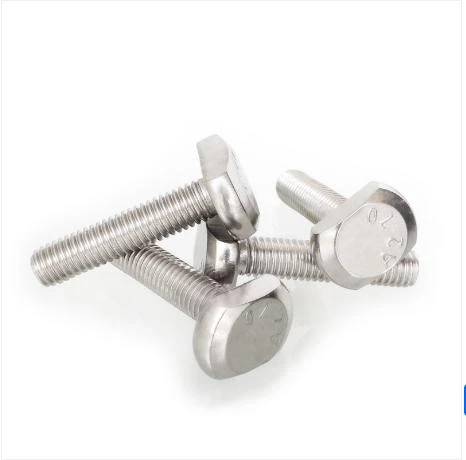

M7x1 Flange Nuts for Secure Fastening and Reliable Performance in Various Applications
ธ.ค. . 30, 2024 19:36 Back to list
M7x1 Flange Nuts for Secure Fastening and Reliable Performance in Various Applications
Understanding M7x1 Flange Nuts A Comprehensive Guide
Flange nuts are commonly used components in various mechanical and structural applications. One such specification is the M7x1 flange nut, which plays a significant role in fastening systems. In this article, we will explore the features, advantages, applications, and considerations surrounding M7x1 flange nuts, providing a well-rounded understanding of this essential hardware component.
What is an M7x1 Flange Nut?
The designation M7x1 refers to the metric thread of the nut, indicating that it has a nominal diameter of 7 millimeters and a threading pitch of 1 millimeter. The flange aspect means that the nut has a wider base or collar that acts as a built-in washer. This design characteristic provides several key benefits, making M7x1 flange nuts suitable for a variety of applications.
Features and Benefits
1. Improved Load Distribution The flange of the nut increases the surface area in contact with the material to which it is being fastened. This leads to improved load distribution, reducing the risk of damage or deformation to the parts involved.
2. Prevention of Loosening Flange nuts often have a serrated or toothed design on the underside of the flange. This feature provides a locking mechanism that helps prevent the nut from loosening due to vibrations or dynamic loads, enhancing the integrity of the assembly over time.
3. Ease of Installation With their wide flange, these nuts can be installed more easily compared to standard hex nuts, particularly in confined spaces. The flange serves as a built-in washer, simplifying assembly and saving time during installation.
4. Versatility in Materials M7x1 flange nuts are available in a variety of materials, including stainless steel, carbon steel, and nylon. This versatility allows for tailored applications in different environments, whether it's in corrosive conditions or high-temperature settings.
Applications
M7x1 flange nuts are utilized across diverse industries owing to their robustness and reliability
. They are commonly found inm7x1 0 flange nut

- Automotive Manufacturing Flange nuts are used extensively in vehicle assemblies, providing secure fastening for components such as suspensions and engine parts where vibration is prevalent.
- Construction In structural applications, M7x1 flange nuts help secure beams, trusses, and other critical components, ensuring stability and safety in the infrastructure.
- Machinery and Equipment In various machinery, flange nuts are used to fasten parts that experience dynamic loading, such as rotating machinery and conveyor systems.
- Electronics In the electronics industry, where precision and reliability are paramount, flange nuts are used to secure components in circuit boards and housings, ensuring durability.
Considerations When Using M7x1 Flange Nuts
When selecting and using M7x1 flange nuts, there are several considerations to keep in mind
- Material Compatibility Ensure that the material of the flange nut is compatible with the materials to which it will be attached. This is particularly important in preventing galvanic corrosion in mixed metal applications.
- Proper Torque Specifications It's essential to use the right torque values during installation. Over-tightening can lead to stripping threads or damaging the flange, while under-tightening may result in loosening.
- Environmental Factors Consider the operating environment. For outdoor applications or corrosive settings, stainless steel or coated flange nuts may be ideal choices to ensure longevity.
Conclusion
In summary, M7x1 flange nuts are indispensable components with a range of benefits in load distribution, prevention of loosening, and ease of installation. Their versatility allows for use in numerous applications across various industries. Understanding their features and applications can help engineers, designers, and builders make informed decisions to enhance the integrity and reliability of their projects. With the right selection and proper usage, M7x1 flange nuts can significantly contribute to the performance and durability of mechanical assemblies.
Latest news
-
Hot Dip Galvanized Bolts-About LongZe|High Strength, Corrosion Resistance
NewsJul.30,2025
-
High-Strength Hot Dip Galvanized Bolts - Hebei Longze | Corrosion Resistance, Customization
NewsJul.30,2025
-
Hot Dip Galvanized Bolts-Hebei Longze|Corrosion Resistance&High Strength
NewsJul.30,2025
-
High-Strength Hot-Dip Galvanized Bolts-Hebei Longze|Corrosion Resistance&High Strength
NewsJul.30,2025
-
Hot Dip Galvanized Bolts-Hebei Longze|Corrosion Resistance&High Strength
NewsJul.30,2025
-
Hot Dip Galvanized Bolts - Hebei Longze | Corrosion Resistance, High Strength
NewsJul.30,2025

